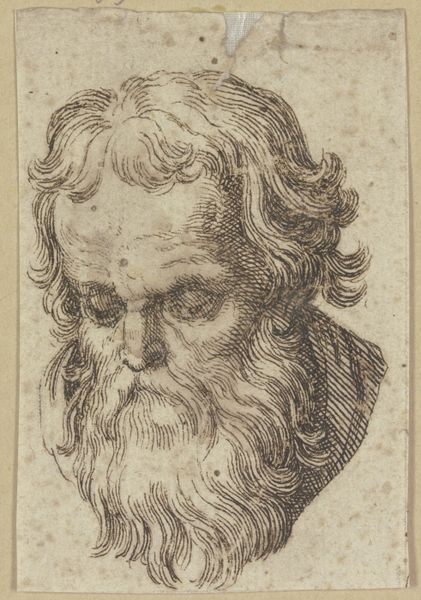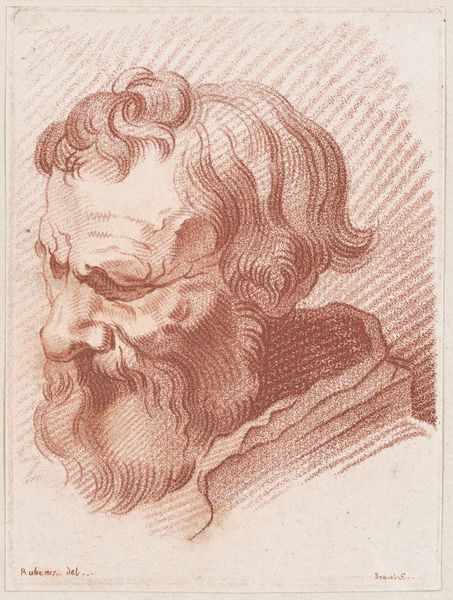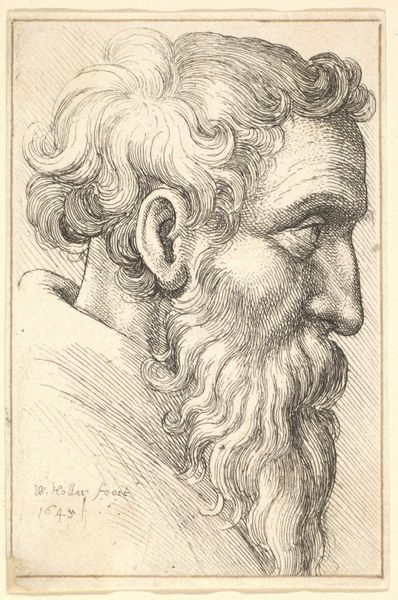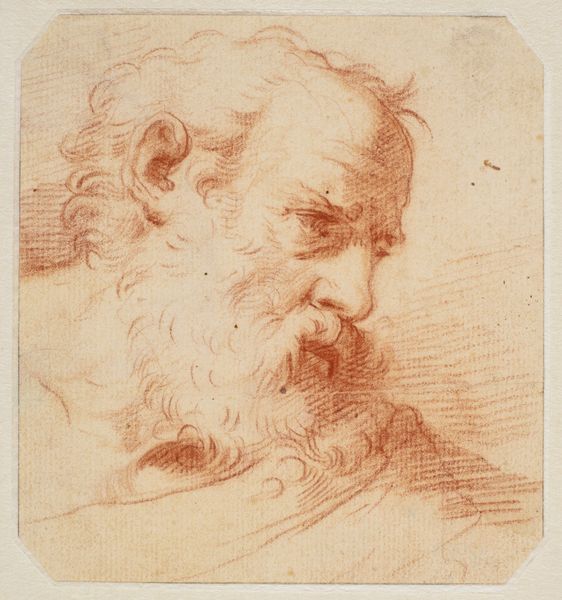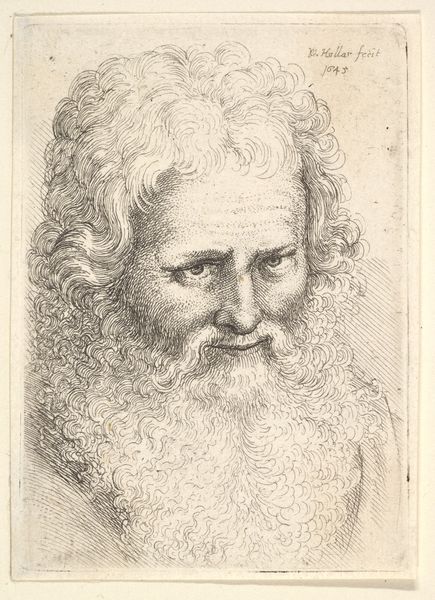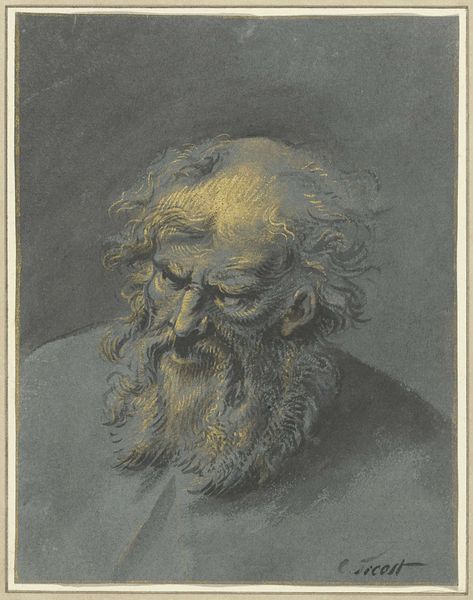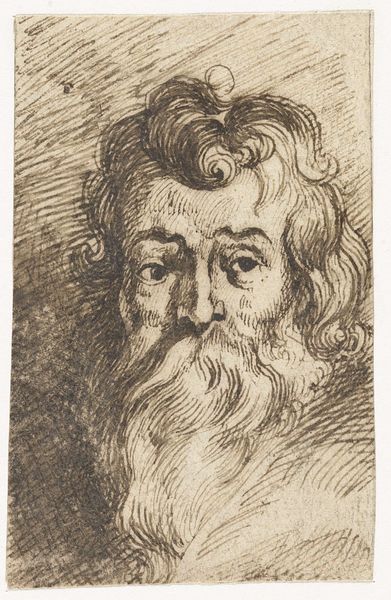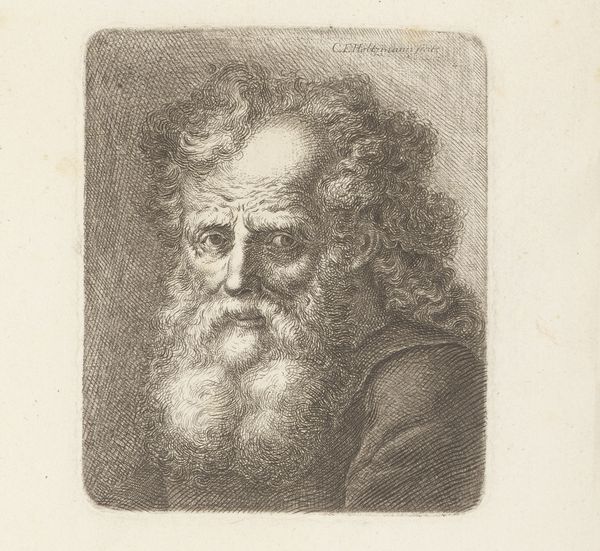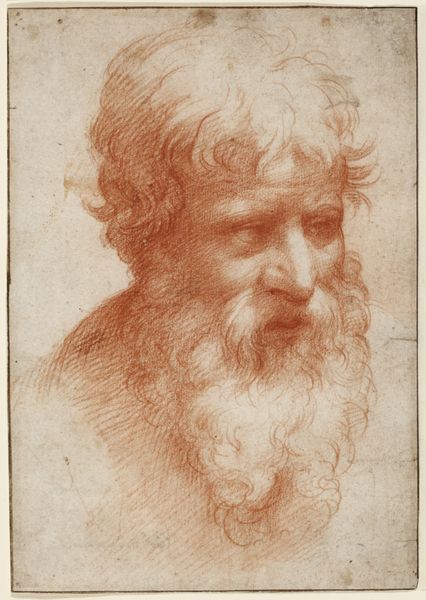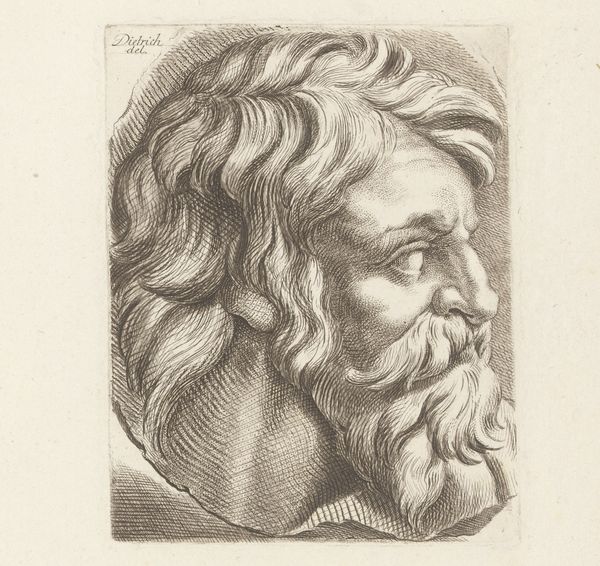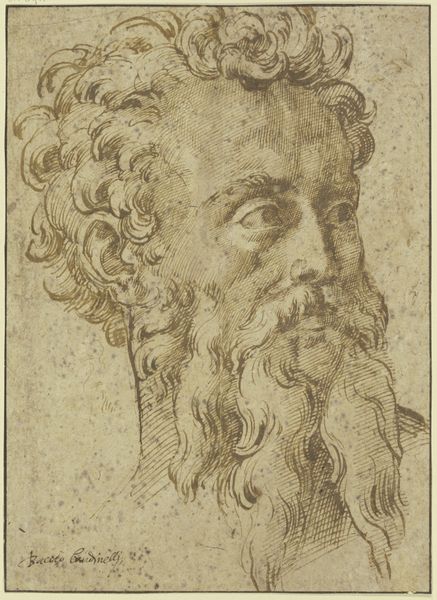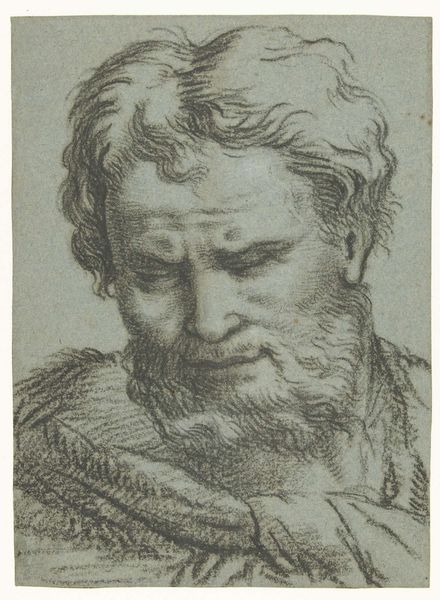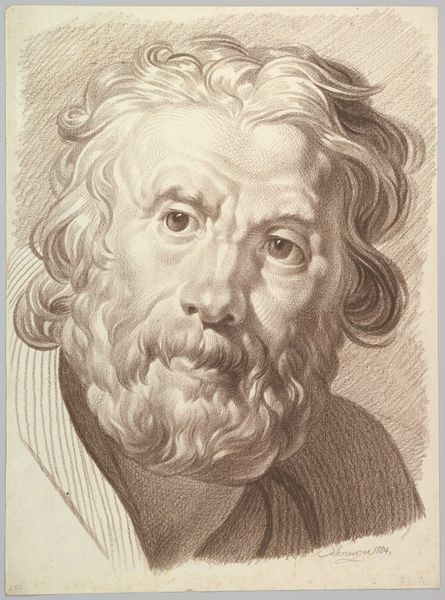
Dimensions: Sheet (Trimmed): 6 in. × 4 7/16 in. (15.3 × 11.3 cm)
Copyright: Public Domain
Editor: So this is Louis Marin Bonnet's "Head of a Man with a Beard," from sometime between 1750 and 1793. It’s a print, an engraving or etching, that's quite striking! There's so much texture created with these tiny lines. What stands out to you about how this print was made? Curator: For me, it's crucial to understand this print in the context of 18th-century printmaking. Look closely. This isn't just about artistic expression; it’s about reproduction, circulation, and access. How does the print medium itself shape our experience of this face? Editor: That's interesting! I was so focused on the expression. How does the reproductive nature of printmaking change things? Curator: Consider the labor involved, the accessibility of prints compared to unique paintings, and the dissemination of imagery. Etchings like this democratized art in a way, bringing images into the homes of a wider audience. This impacts the social role art fulfills. Does knowing it's a print rather than a drawing influence how we interpret the subject, its seriousness? Editor: That’s a good point! The texture, created by these lines and cross-hatching, almost feels industrial in its precision. So, it’s not just about the ‘what’ of the portrait, but the ‘how’ and ‘why’ it was produced this way? Curator: Precisely! The materials, the process of etching and printing – these are not neutral. They imbue the image with social and economic meanings. Editor: I never thought about a portrait's material process carrying meaning. It definitely gives me a new perspective! Curator: Seeing art this way, revealing these conditions of creation and distribution, enhances appreciation. We can move past the image to consider production.
Comments
No comments
Be the first to comment and join the conversation on the ultimate creative platform.
